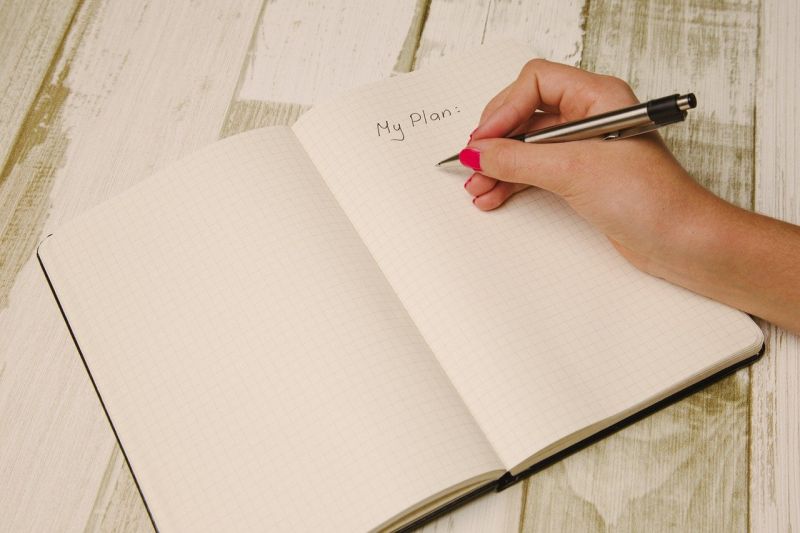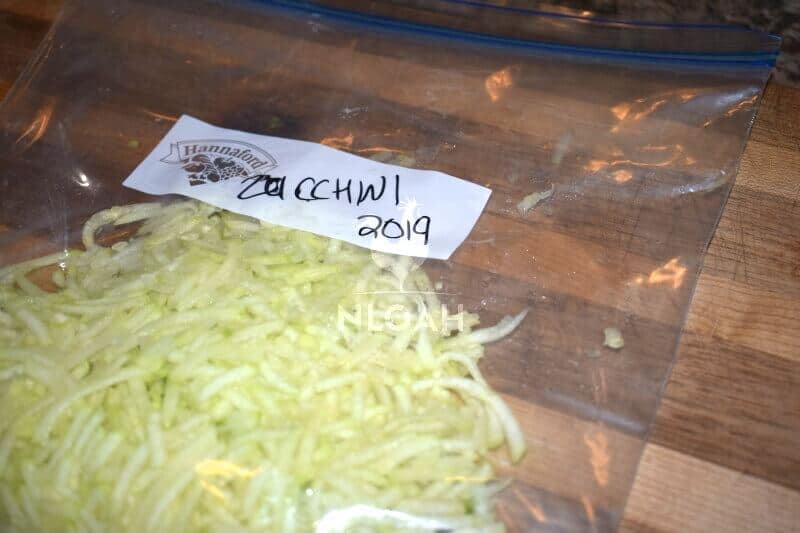Staying organized is tough – and if you have a homestead, you might find that’s doubly true. There’s a lot going on both inside the house as well as outdoors, and getting organized always seems to me to be an uphill battle. I’ll get one aspect of my life organized just to find another has gone to shambles!
There are several ways you can organize your homestead, both in and out. It takes some vigilance and patience, but with a bit of practice, you’ll have a homestead that more or less runs itself. No exaggeration!

For me, the key is tackling one area at a time and making sure I stick to an organization plan I set for myself. I can’t hodgepodge or jump from one uncompleted project to the next – in order for me to stay organized, I’ve got to stay focused.
Here are some easy tips that you can follow to take control of your homesteading life.
1. Take Time to Plan
Your first step toward an organized homestead is to take the time to plan. Even if it’s just one day a week or one day a month, make sure you plan out everything that needs to be done and organized on your homestead.
Your weekly planning routine could include anything you want. You could write down a master list of things that need to be done or make a grocery list for the meals for the week. You can keep your notes in a planner or on a large master calendar.
Your planner doesn’t have to be just for to-do’s, either. For example, you could include notes on how well your goats are producing milk or your hens are laying eggs.
You could write notes on the weather or on your garden. It will help you stay organized and if you share it with the rest of your family, it can help the whole homestead run more smoothly, too.
2. Get Rid of the Paper
Some people do better when they’re working with lots of paper, but for me, getting rid of all the paper has been a lifesaver in improving the organization around my homestead. For example, can you clear out any receipts?
Sure, you need to hang on to your receipts for taxes. But if you find yourself with a huge mass of receipts at the end of the year, you’re going to be overwhelmed when it comes to organizing them.
Instead, keep separate folders or boxes for the receipts that you absolutely need to keep and organize them by quarter.
You can do the same for other paper items around the homestead, whether it’s memorabilia or important documents. There are all kinds of apps and other programs you can use now to scan in your receipts so you don’t necessarily need to hang on to all the paper, either.
3. Everything Has a Place
An easy place to start when you’re organizing your homestead is to designate a spot for everything, and stick to it.
For a long time, we had all these random baskets of odds and ends floating around our house and in our barns because that seemed to be the easiest way to organize things that had no specific home.
I had a basket on top of the fridge that contained everything from old bills to screwdrivers and ointment for the pig.
That’s not the best way to do things. Even though it clears your main living spaces of clutter, you’ll end up wasting time and money because you’ll never be able to find anything you need.
Start with one room and designate a spot for everything that’ sin that room. If you find gear that doesn’t necessarily belong in that room, put it in a basket, clear the room, and move to the next.
Once you’re done with the entire house and homestead, you can go through the basket and find a designated spot for everything in the room.

4. Make Labels
Once you know where everything is supposed to go, the best way to keep yourself on track so you don’t forget where those items go is to label them.
It’s fine to have bins and buckets filled with assorted nails and screws, but make sure you label it so you know that’s what those bins and buckets are for.
You can make a label maker or you can just write on a sticky note. Some people are high-tech enough to even use QR codes to help label all their gear! However you choose to label it is up to you, but make sure you do it.
5. Make a List
…and yes, check it twice!
Make a list of everything that needs to be cleaned and/or organized. You can set this list up to be checked on a daily, weekly, monthly, quarterly, and yearly basis.
Ideally, you’ll be able to get all of your cleaning done during the week with Saturday left as a day for “extras” and Sunday as a total day of rest.
Keeping a list will allow you to automate your processes since you won’t have to think about what needs to be done. This can alleviate a lot of the stress involved with managing a homestead.
6. Get Creative
If you can, explore some creative solutions to organizing the mess.
For example, if you have a ton of photos hanging around, you might struggle to come up with a good organizational system because you are so emotionally attached to them.
But what if you could upload them to digital storage on a hard drive? Then, you would still have access to the photos but you wouldn’t be overwhelmed by all the clutter.
Similarly, you can make a digital display photo frame do the work. This is even better because your photos can be on display at all times – without all the mess.
7. What Can Be Outsourced?
Next, think about what sorts of cleaning and organization tasks can be “outsourced.”
Not everybody can afford to hire a cleaning person – and that’s totally fine. But what if you could buy a Roomba to do all the vacuuming for you? Or drop off your dry cleaning rather than trying to hand wash everything yourself?
8. Home in on “the Spot”
Is there one specific area in your house that always tends to get cluttered? For me, it’s the bench in my entryway. It quickly becomes a dumping ground for anything and everything that doesn’t have a home.
If you have one of these spots in your home or on your homestead that you can identify it, dedicate a few minutes each day to declutter it. You’ll find that it’s well worth the effort when you don’t have a mound of junk to deal with at the end of the week.
9. Throw Stuff Out
Can’t decide whether you should throw things out or find a space for them?
I usually advocate for throwing things out – I don’t think that’s something my husband is always thrilled with, but it helps keep us organized.
You don’t have to wait for springtime to do a “spring purge” or “spring clean”, either. In fact, I usually do most of my purging, cleaning, and organizing in the winter, because it tends to be a much less busy time on my homestead.
You don’t need to add sentimentality to every item you own. For instance, you might be hanging on to an old sweater because your grandpa gave it to you the year he died. But if you have that sweater in a box, shoved underneath your bed, where you never even look at it, what’s the point of keeping it?
If you’re attached to something and can’t bear to throw it away – even though you never use it and its existence is making you feel less organized – take a picture of it. Then, you’ll be able to preserve the memory without having to hang on to the clutter.
Can’t decide one way or the other? Set aside a box to put in items that you can’t bear to part with, yet know you never use. At the end of the month, or at the end of six months (you can decide for yourself on what kind of interval works best for you), return to the box and reevaluate. If you didn’t use the item in that time frame, it’s time to go your separate ways.
10. Get the Whole Family Involved
It takes an entire family to make a mess, so why aren’t you getting the whole family involved in cleaning it up? When you don’t have to worry about getting the house clean, you will have so much more time in your day to spend doing the things that matter more.
Don’t be afraid of getting your kids involved with the chores. Just because they are going to school and have homework to do doesn’t mean they shouldn’t pitch in, and do their fair share.
There are all kinds of ideas you can use to get your kids involved. Whether it’s chore charts or calendars with a list of their responsibilities for the day or week, make sure you get your kids involved in homestead chores, both inside the home and out – it builds discipline and responsibility.
11. Set Up Phone Reminders
We live in the best day and age for organization because our phones can do so much of the work for us.
Rather than relying on yourself to remember what needs to be done, you can set up a phone reminder to do it for you. You can set daily, monthly, or weekly reminders for things as simple as unloading the dishwasher or as complex as deworming your sheep.
Then, apps and websites such as Google Calendar will send a reminder on when you need to treat everyone. Easy peasy!
12. Try Not to Be a Perfectionist
This is one I struggle with! However, if you’re going to get organized and stay organized, you need to ditch the idea of perfection that you’re carting around.
In our modern day and age, we are programmed to believe that if it doesn’t look perfect right away, we should give up and abandon the task altogether. That’s not the case!
Every little bit helps. Start with your desk. Then move on to the rest of your office. Then the rest of your home. You can do things in bite-sized chunks. Nobody is timing you!
13. Consider Keeping a Farm Binder
For me, a farm binder doesn’t work well because I’d rather have everything in a digital form. However, keeping a binder is a great way to keep track of notes and information for specific animals.
You could have one binder just for your flock of sheep, for instance. In that binder, you could include things like medication lists, pregnancy notes, registration papers, and more.
That way, you’ll have everything at your fingertips if you need to provide information to a vet, to someone taking care of your farm while you’re away on vacation, or for any other reason.
14, Use a Garden Planner
Farmer’s Almanac has an excellent garden planner you can use. You can input your garden dimensions and plan your crops, which is super useful if you like to rotate your crops from year to year to prevent pests and diseases.
15. Prioritize
You can’t do everything at once. At the start of each day (or the night before, if that’s easier for you) make a list of everything that needs to be done. Number every item according to priority.
This will prevent you from tackling all the fun or easy jobs first and leaving the hard ones for last – which can quickly lead to you putting off those hard tasks for as long as possible!
16. Time Yourself
If you feel totally overwhelmed by all the things you need to get done, set a timer. You’re only going to clean a certain room for ten minutes, and then move on.
This is a great way to get more done in a short amount of time, since you won’t dilly dally. Plus, I’ve often found that I can get in a great workout in the meantime, too.
17. Get Up Early
For me, the key to a successfully organized homestead is to get up early and tackle the day. This can be tough, particularly in the winter when that cozy bed continues to call to you.
However, getting up early will let you get going on your to-do list earlier so you aren’t left dragging your feet at 3 pm when the inevitable “slump” hits.
18. Keep Detailed Records
How often, at the beginning of a new season, have you found yourself scratching your head because you can’t remember how you did things last year?
I keep detailed records of our farrowing, lambing, and gardening successes and failures each year. We note everything from ear tag numbers for our baby animals to pests that plagued a certain part of the garden. That way, next year, we’ll be able to jog our memory of what we need to do again (or avoid doing again!).
19. Set One Day Per Task
This method doesn’t work well for me because I’ve learned that, if I come up with a rigid plan in my mind, it leads to inflexibility that doesn’t lend itself well to a homestead that requires constant flexibility for emergencies!
However, some people find that it works well to set one day per week per task. For example, Monday is mopping day, Tuesday is bathrooms, and Wednesday is the garage. If that method works well for you, and you like breaking up your cleaning into bite-sized chunks, by all means, go for it.
20. Do a Seasonal Big Clean
After each season, try to do one big clean. For example, between fall and winter is a great time to make sure all your heating systems are in good working order. Between winter and spring is a great time to organize your seeds and gardening equipment. And so on.
21. Let It Go
Sometimes, you’re just not going to be able to get rid of that pile of junk. And that’s okay. Sometimes, it’s okay to let things be.
While piles of junk can be frustrating and overwhelming, sometimes you just need to relax and enjoy the little things on the farm – because sometimes, there are more important things to deal with than the mess.
Why an Organized Homestead is Important
Before you can organize your homestead, you need to figure out your why.
Why is an organized homestead important to you? Are you sick of hunting for items, or with feeling stressed as soon as you walk in the door? Maybe you want to make day-to-day living easier, or to stop wasting money on items you already have – but couldn’t find when you needed them.
Write down your “why,” whatever it might mean to you, and keep the note somewhere you will see it regularly. That way, when you’re tired and don’t want to deal with the mess, you’ll have some motivation to keep things clean and organized.


Rebekah is a high-school English teacher n New York, where she lives on a 22 acre homestead. She raises and grows chickens, bees, and veggies such as zucchini (among other things).
